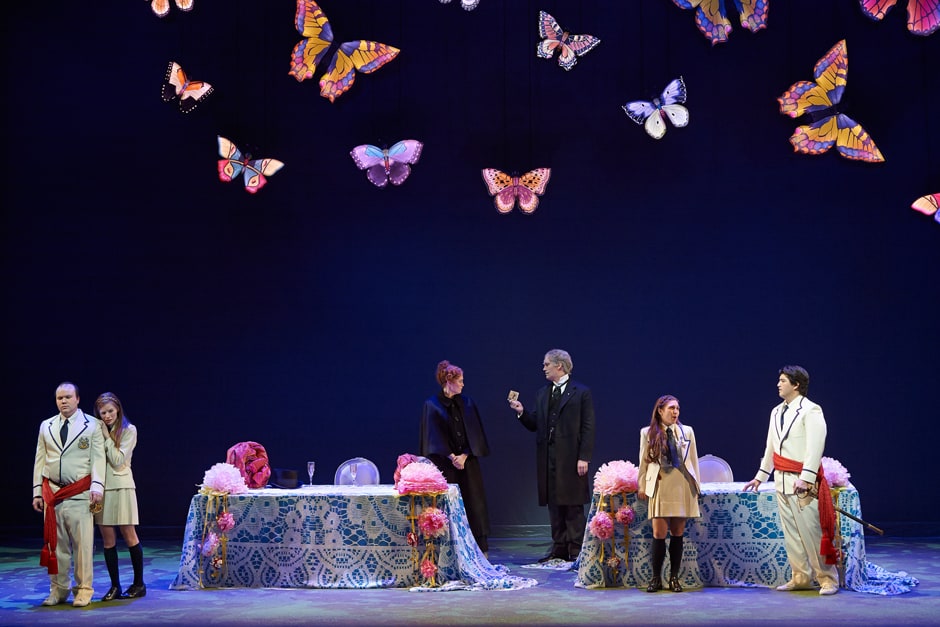Student tickets to the Canadian Opera Company’s (COC) productions are actually relatively affordable, but money isn’t the only thing standing in the way of many of us attending the shows. The truth is, opera is intimidating. Hard to understand even when in English, it can be easily written off in favour of lighter fare.
With this in mind, I’ve explained the ups-and-downs of the operas making up this year’s COC line-up, so you can brave the world of tenors and sopranos like a savvy opera connoisseur.
Madama Butterfly
October 10–31, 2014
The one where an American tenor marries a Japanese soprano, leaves her for the whole opera, and then comes back just in time for the finale to collect his paycheck.
This opera is essentially about a naïve Japanese girl who marries an American sailor, and spends the rest of the opera awaiting his return, only to find out that he has remarried an American, resulting in her committing suicide. The genius of Madama Butterfly lies in the music that draws out of the simple plot. The Butterfly’s Penelope-like wait for her love is heart-rending and culminates in her famous aria, “Un Bel Vedremo,” where she fantasizes about the “One Fine Day” when she will be reunited with her love.
See it for: the exotic sets and music which more than make up for the sappiness.
Don Giovanni
January 24–February 21, 2015
The one where a notorious playboy tries four times to get laid and gets his comeuppance from a statue.
This opera is rife with moments of comedic gold. Most notable among these is an aria in which Leporello — Don Giovanni’s servant — lists all the women his master has ever slept with: 640 in Italy, 231 in Germany, 100 in France, 91 in Turkey, and a whopping 1,003 in Giovanni’s native Spain.
They say that opera is when a tenor and soprano want to make love, but are prevented from doing so by a baritone. This is essentially the plot of Don Giovanni, which plods along until its shocking conclusion, where the statue of a man whose daughter Giovanni had previously raped comes alive and drags him down to hell — a truly revolutionary finale for Mozart’s time.
See it for: a wild comedic romp, with a satisfying conclusion.
Die Walkure (The Valkyries)
January 31–February 22, 2015
The one with the incest, Valkyries, and the famous ride.
Known for the Ride of the Valkyries, Die Walküre has some of Richard Wagner’s most memorable music. The plot is high drama — it involves squabbling gods, Valkyries, and a circle of fire cast around a sleeping beauty to be woken only by a hero strong enough to brave the flames.
See it for: if you like serious drama, enjoy opera music at its most intellectual and moving, and if you can manage not to go to the bathroom for five hours.


